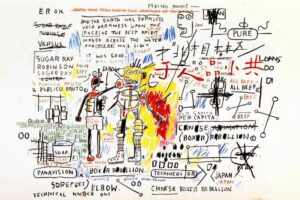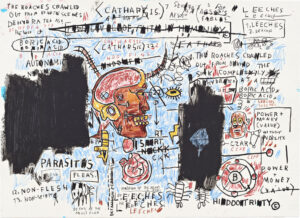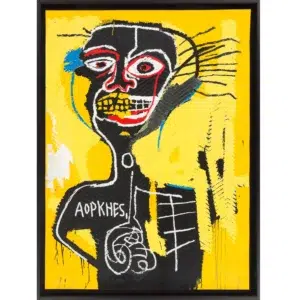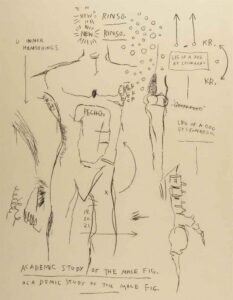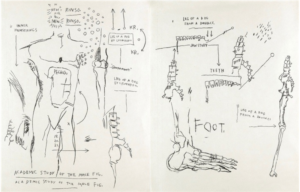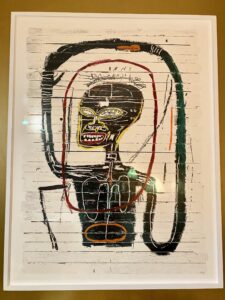Ernok, 1982/2001
Numbered from an edition of 85 (total edition includes 15 artist's proofs), signed in pencil on the verso by Gerard Basquiat, the administrator of the artist's estate, and dated, with the estate stamp on the verso, on Saunders 410 Hot Press watercolor paper, printed by Brand X Editions, New York, and with their inkstamp on the verso, published by DeSanctis Carr Fine Art, Los Angeles
40 x 40 inches (101.6 x 101.6 cm.)
All works are inspected prior to delivery, work will be sent out tracked and insured at buyers cost. If you'd like to make specific arrangements or discuss collection then please contact us directly.
Accepted: Wire transfer
ART PLEASE Assurance Policy: Every ART PLEASE seller has been approved by ART PLEASE after a thorough review. All of our sellers are required to accept the following ART PLEASE policy: A buyer may return an item purchased through ART PLEASE, if the item received is not as described in its listing, or is found to be unauthentic.
Jean-Michel Basquiat, an iconic figure in the contemporary art scene of the 1980s, wielded a raw and visceral style that propelled him to international acclaim. Born in Brooklyn in 1960, Basquiat's journey from street graffiti artist to celebrated painter was marked by his unique blend of expressive abstraction, graffiti-inspired imagery, and social commentary. His artwork often delved into themes of race, identity, and urban life, reflecting his own experiences as a young Black man navigating the vibrant yet tumultuous streets of New York City. In 1982, Basquiat created one of his seminal works, "Ernok," a piece that encapsulates his distinctive visual language and deep-rooted cultural narratives.
"Ernok," rendered in Basquiat's characteristic frenetic style, is a captivating exploration of the human form and psyche. The painting pulsates with energy, its bold strokes and enigmatic symbols inviting viewers into a world of profound complexity and emotion. At the center of the composition, a figure emerges, its fragmented features and skeletal structure hinting at the fragility of existence and the universal struggle for identity and belonging. Surrounding the central figure are a myriad of cryptic symbols, words, and gestural marks, each layer adding depth to the work's enigmatic narrative. Through "Ernok," Basquiat invites viewers to confront the existential questions of our time while celebrating the resilience and spirit of the human condition.



